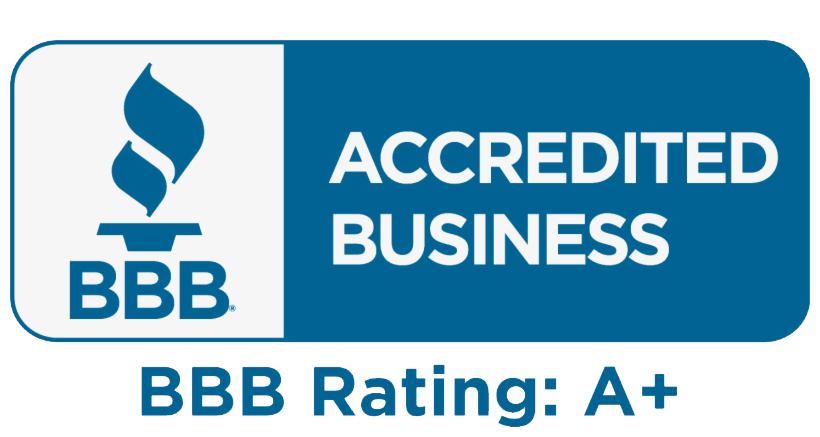Blog

What Are Asphalt Millings? Benefits, Uses, and Roofing Repair Tips
I
f you’ve ever driven past a road construction site and noticed a pile of black, gravel-like material being removed from the surface, you’ve likely encountered asphalt millings. But what exactly are asphalt millings, and why are they so popular in construction projects? Whether you’re considering using asphalt millings for your driveway, parking lot, or another project, understanding what they are and how they work can help you make informed decisions about your paving needs.
And here’s something to think about—while you’re upgrading your outdoor surfaces, why not tackle your roof too? Combining roofing repair with asphalt milling projects ensures your property not only looks great but also stays protected from the elements. Whether it’s fixing leaks or replacing shingles, addressing your roof’s condition alongside paving improvements creates a seamless, well-maintained exterior.
In this blog, we’ll dive deep into the world of asphalt millings—what they are, how they’re produced, and their key advantages. If you’re curious about an eco-friendly and cost-effective alternative to traditional asphalt paving, read on!
Roofing Repair: An Essential Step to Protect Your Investment
While asphalt millings provide a durable and attractive surface for your driveway or lot, maintaining your roof is equally important for the overall health of your property. Investing in roofing repair can prevent costly damage, boost curb appeal, and complement your newly paved surfaces.
Cracks, leaks, or worn shingles can lead to water damage and structural issues over time. By repairing or upgrading your roof during outdoor renovation projects, you create a cohesive and polished look that enhances both functionality and style. Pairing a sturdy roof with asphalt millings not only improves visual appeal but also adds long-term value to your property.
What Are Asphalt Millings?
Asphalt millings, also known as recycled asphalt pavement (RAP), are the byproduct of removing and reprocessing old asphalt roads, driveways, or parking lots. During road resurfacing or reconstruction, the top layer of asphalt is milled off—hence the term “millings”—and then repurposed for other paving projects. Unlike new asphalt, which is produced using fresh materials, millings are a sustainable option because they recycle existing asphalt.
In essence, asphalt millings are a mixture of crushed, reclaimed asphalt material that can be reused as a base layer or surface layer for roads, driveways, and other construction projects.
How Are Asphalt Millings Made?
The process of creating asphalt millings involves specialized equipment known as milling machines, which grind up the top layers of an asphalt surface. This procedure is common during road reconstruction or resurfacing projects where the old asphalt is removed to make way for new pavement.
Here’s how the process works:
Step 1: Milling the Asphalt
The milling machine, equipped with a rotating drum, grinds the asphalt surface into small chunks or millings. The machine gathers these millings, which are then collected and transported to a processing site.
Step 2: Processing and Screening
The asphalt millings are screened to remove any oversized pieces or debris and then sorted according to size. In some cases, the millings are mixed with other materials such as stone or aggregate to enhance strength and durability.
Step 3: Reusing the Material
The processed millings can be reused for a variety of projects. They are often used as a base material for new roads or driveways, as well as for resurfacing existing asphalt surfaces. Unlike new asphalt, which requires heat, asphalt millings are spread and compacted without the need for hot application.
Key Benefits of Using Asphalt Millings
One of the main reasons asphalt millings have become a popular alternative to traditional asphalt is due to their many benefits. From environmental sustainability to cost savings, millings offer a practical solution for a wide range of paving projects.
1. Eco-Friendly and Sustainable
Asphalt millings are a sustainable option because they are made from recycled materials. Instead of sending old asphalt to landfills, millings give the material new life, reducing waste and the need for new raw materials. The production of new asphalt requires the extraction of natural resources such as petroleum, while millings reuse existing materials, minimizing the carbon footprint.
2. Cost-Effective
One of the biggest advantages of using asphalt millings is cost savings. Asphalt millings are often significantly less expensive than new asphalt because they are made from recycled material. If you’re working within a budget but still want a durable and attractive surface, millings are a great option.
Personal Insight: John, a homeowner in Colorado, opted to use asphalt millings for his long rural driveway. “The cost difference was incredible. I saved thousands by choosing millings over new asphalt, and it still gave me the durability and look I wanted.”
3. Durability and Longevity
Although recycled, asphalt millings provide excellent durability and strength. Once compacted, millings create a solid, hard surface that can withstand heavy traffic and harsh weather conditions. With proper installation, a surface made of millings can last just as long as a traditional asphalt surface.
4. Low Maintenance
Asphalt millings are relatively low-maintenance compared to new asphalt. Because they are made from recycled materials, they tend to compact well over time, reducing the need for resealing or frequent repairs. This makes millings an ideal choice for low-traffic areas such as driveways, farm roads, and parking lots.
5. Quick Installation
The process of installing asphalt millings is faster and more efficient than traditional asphalt paving. Because millings do not require heat or extensive curing time, they can be spread, graded, and compacted in a short time, allowing you to complete your project quickly.
Common Uses for Asphalt Millings
Asphalt millings are incredibly versatile and can be used for a wide range of paving projects. Here are some of the most common applications:
1. Driveways
Asphalt millings are a popular choice for residential driveways due to their durability and affordability. They create a stable surface that’s easy to maintain and withstands traffic well. Plus, they offer the classic black look of traditional asphalt without the high cost.
2. Parking Lots
For businesses or organizations looking to pave a parking lot on a budget, asphalt millings provide a solid, cost-effective solution. They can handle the weight of parked vehicles and light traffic while maintaining an attractive appearance.
3. Private Roads and Rural Roads
Asphalt millings are often used for rural or private roads that don’t require the same level of finish as a highway or public road. Because of their durability, they can handle a variety of weather conditions and heavy equipment without degrading quickly.
4. Pothole Patching
Millings can also be used as a temporary or permanent solution for filling potholes in existing asphalt surfaces. Since millings naturally bond together when compacted, they form a sturdy surface that can extend the life of a damaged road or driveway.
How to Install Asphalt Millings: A Step-by-Step Guide
If you’re considering installing asphalt millings for your driveway or project, it’s essential to follow the right process to ensure a long-lasting, smooth surface. Here’s a step-by-step guide to installing millings:
Step 1: Prepare the Area
Before installing the millings, make sure the area is properly graded and compacted. Clear any debris, weeds, or loose material from the site to create a solid foundation for the millings. Proper drainage is also crucial to prevent water from pooling and causing damage.
Step 2: Spread the Millings
Once the area is prepped, spread the asphalt millings evenly across the surface. You can use a tractor or another piece of equipment to spread the millings, aiming for a layer about 4 to 6 inches thick.
Step 3: Compact the Millings
After the millings are spread, they need to be compacted using a roller. Compaction is what gives millings their strength and stability. Pass the roller over the millings several times to ensure they are firmly packed.
Step 4: Let the Surface Set
After compacting, let the millings set for at least 24 hours before using the surface. Over time, the millings will harden and bind together, creating a durable, smooth surface that will last for years.
Are Asphalt Millings Right for You?
While asphalt millings offer many benefits, they may not be suitable for every project. Let’s weigh the pros and cons to help you decide if millings are the right choice for your paving needs.
Pros:
- Cost-effective compared to new asphalt
- Environmentally friendly, made from recycled materials
- Durable and low-maintenance
- Quick installation process
Cons:
- Millings don’t offer the same smooth, polished finish as new asphalt.
- They may require more compaction to ensure longevity.
- In some cases, millings may not bond as tightly as new asphalt, leading to loose material.
Expert Opinion on Asphalt Millings
According to paving expert Laura Simmons, who has worked in the industry for over 15 years, “Asphalt millings are an excellent option for anyone looking to save money while still getting a durable surface. With the right compaction and preparation, millings can perform just as well as traditional asphalt in many applications.”
Conclusion: Why Choose Asphalt Millings?
Asphalt millings offer a practical, eco-friendly, and cost-effective alternative to traditional asphalt. Whether you’re paving a driveway, patching a road, or creating a parking lot, millings provide the durability and longevity needed to withstand heavy traffic and harsh weather conditions. By recycling existing asphalt, you’re also contributing to a more sustainable paving solution, which is a win for both your wallet and the environment.
With proper installation and maintenance, asphalt millings can deliver long-lasting results and prove to be a smart investment for any project. If you’re looking for an affordable way to achieve a durable, low-maintenance paved surface, asphalt millings might just be the perfect solution.
Now that you know what asphalt millings are and how they work, you can make an informed decision for your next paving project!








